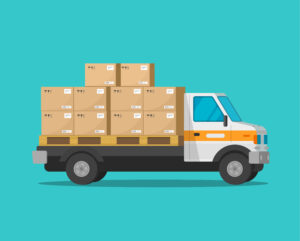The convenience and accessibility of online shopping have revolutionized the way we buy and consume products. However, this modern shopping method comes with a hidden price: the environmental cost. This article explores the environmental impact of online shopping, including increased packaging waste, carbon emissions from transportation, and the strain on natural resources. We will also discuss potential solutions to mitigate these consequences.

- Packaging Waste
“The packaging is the first thing we throw away, but it has a lasting impact on our environment.” – Unknown
One significant environmental issue associated with online shopping is the excessive use of packaging materials. When products are shipped directly to consumers, they require more packaging to protect them during transit. This often includes plastic, Styrofoam, and cardboard, which are not always recycled or biodegradable.
Example: In 2019, Amazon alone generated 465 million pounds of plastic packaging waste, including air pillows, bubble wrap, and plastic bags.
Solution: Encourage companies to use eco-friendly packaging materials and minimize packaging waste. Consumers can also reuse or recycle packaging materials whenever possible.

- Carbon Emissions from Transportation
“Transportation is the largest single source of air pollution in the United States.” – Natural Resources Defense Council
The delivery process of online shopping contributes to increased carbon emissions. Products often travel long distances from the manufacturer to the consumer, passing through various distribution centers. This transportation process relies heavily on fossil fuels, which release greenhouse gases into the atmosphere and contribute to climate change.
Example: A study by the Massachusetts Institute of Technology found that online shopping can generate up to 35% more carbon emissions than traditional brick-and-mortar shopping, depending on factors like delivery distance and mode of transportation.
Solution: Support local businesses to reduce transportation distances, and encourage companies to use electric or low-emission vehicles for delivery.

- Strain on Natural Resources
“Buy less, choose well, make it last.” – Vivienne Westwood, Fashion Designer
The ease and convenience of online shopping can lead to overconsumption, putting a strain on natural resources. As consumers purchase more products, demand for raw materials increases, leading to deforestation, habitat destruction, and resource depletion.
Example: The fashion industry, which has seen a boom in online sales, is responsible for 10% of global carbon emissions and consumes vast amounts of water and other resources.
Solution: Adopt sustainable consumption habits by purchasing fewer, higher-quality items and supporting companies with responsible sourcing practices.

- Energy Consumption
“Energy and persistence conquer all things.” – Benjamin Franklin
Online shopping requires energy for various processes, such as operating data centers, powering delivery vehicles, and maintaining warehouses. This energy consumption contributes to greenhouse gas emissions and climate change.
Example: According to a study by the US Department of Energy, data centers consumed about 2% of the total electricity used in the United States in 2014.
Solution: Encourage companies to invest in renewable energy sources and energy-efficient technologies. Consumers can also reduce their energy consumption by consolidating online orders and minimizing returns.

- Waste from Returns and Overstock
“Less waste, more taste.” – Unknown
The ease of returning products purchased online leads to a significant amount of waste. Many returned items end up in landfills or are incinerated, contributing to pollution and resource waste. Additionally, overstocked items that do not sell may also be discarded.
Example: In 2018, it was estimated that returns from online purchases in the US generated 5 billion pounds of waste in landfills.
Solution: Implement policies to minimize returns, such as providing accurate product descriptions and sizing information. Companies can also donate or recycle unsold items instead of discarding them.

- E-waste
“Electronic waste is the fastest-growing waste stream in the world.” – United Nations
The growth of online shopping has contributed to the increase in electronic waste (e-waste) as consumers purchase and dispose of electronic devices at an alarming rate. E-waste contains hazardous materials that can contaminate the environment and harm human health.
Example: According to the Global E-waste Monitor, 53.6 million metric tons of e-waste was generated worldwide in 2019, with only 17.4% being recycled.
Solution: Encourage responsible e-waste disposal by offering recycling programs and supporting companies that prioritize sustainable design and product longevity.
Conclusion
Online shopping has revolutionized the way we consume products, but it comes with hidden environmental costs. By understanding these impacts and adopting sustainable habits, we can work together to reduce the environmental footprint of our shopping choices. Remember, every small action counts, and together, we can create a more sustainable future.
